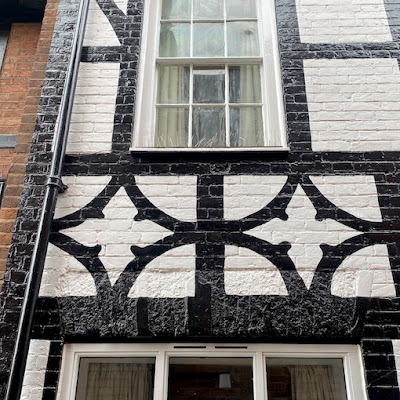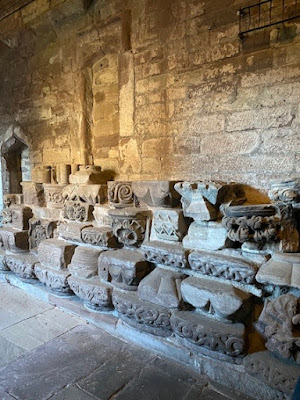Andrew Graham-Dixon, in a recent talk I heard, engaged enthusiastically with English medieval art. He pointed out that 99 per cent of it has been lost, as a result mainly of the various depredations of the Reformation. But he quickly encouraged his listeners to look at the quality of what’s left. His energetic praise for astonishing remnants of large-scale medieval woodcarving (the Abergavenny Jesse, the Cullompton golgotha, both staggering) was infectious. I hope it made people want to make immediate pilgrimages to Gwent and Devon. And the wall-paintings, faded and defaced, are still there in their faint and sometimes barely distinguishable scores. They make one strain to make out details, and marvel.
There’s a marvellous group of churches in Sussex in which frescoes survive in surprising quantity. Occasional details emerge from them to give us an idea of their quality too. One of the best is the small church at Hardham, near Pulborough. I’d been meaning to go there for years, and was glad I visited a few days ago. It’s surprising, if you’ve not read about it, to come across this tiny church in which both spaces, nave and chancel, are full of wall-to-wall frescoes, and that these paintings date from around 1100. They’re very faded, but some of the subjects – a Flight into Egypt, an Annunciation – are not hard to identify.
One of the very best is the temptation of Adam and Eve, not least because the two main figures are bounded by strong outlines, enabling their graphic impact to hit us in the eyeballs. Ribs, bellies, pointing fingers, and Eve’s hand with which she is taking the apple, are all beautifully clear. Only the area around Adam’s groin has been defaced – the Puritans, no doubt, were here. Satan, a fat, coiled serpent, is less clear at the tail end, but has wings (well delineated) and passes the apple from his mouth to Eve’s hand. She points to the apple with her other hand, as if to encourage Adam.
It’s easy to become so carried away with some details that one misses others, some of which are very surprising. Above the painting of the Annunciation and the Visitation in the nave, for example, is an inscription in Latin, a hexameter, and in Lombardic capitals too: ‘VIRGO SALUTATUR STERILIS FECUNDA PROBATUR’ (The virgin is greeted; the infertile woman is shown to be fruitful’*). It’s wrong to think of medieval wall paintings as the unsophisticated products of an illiterate culture. Few medieval people could read and write, but some could, priests (generally) could do so, and would have explained to others what the words meant – as they would also have explained the stories behind the pictures,† whose quality need not astound us – though their preservation is a cause for wonder.
- - - - -
* I think. I have very little Latin and less Greek.
† It’s generally thought that sermonizing was not a major part of early medieval religion and the notion of their being ‘the Bible of the poor’ is, I think, only one aspect of wall paintings’ significance and use. But explanation, reflection, and literacy for some provided the key to meanings at which many, for all their literacy, have to struggle to understand today.








